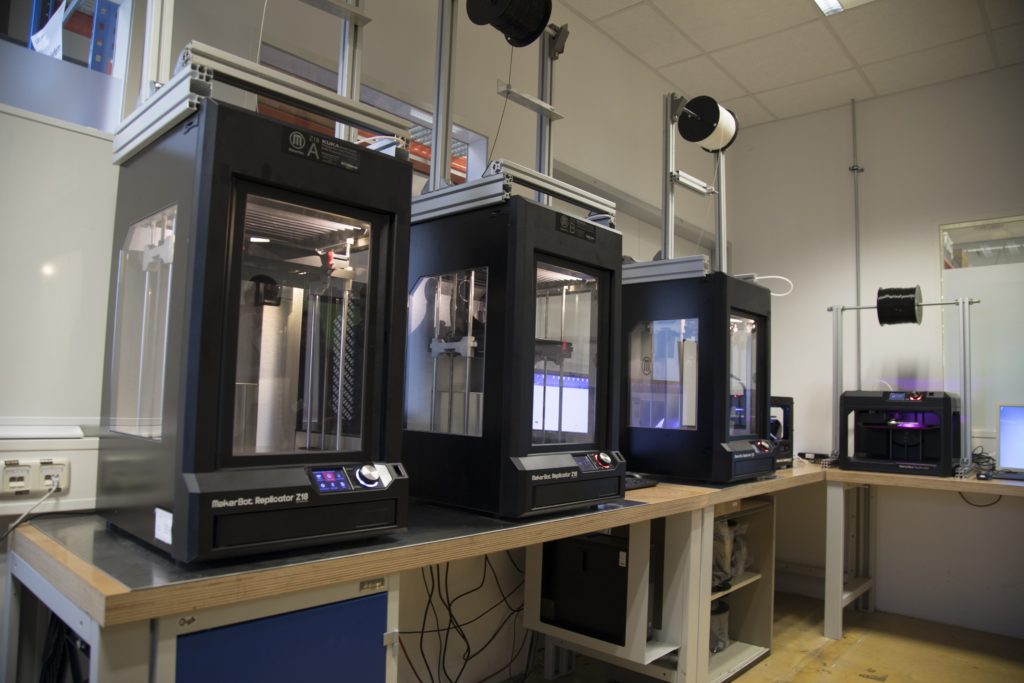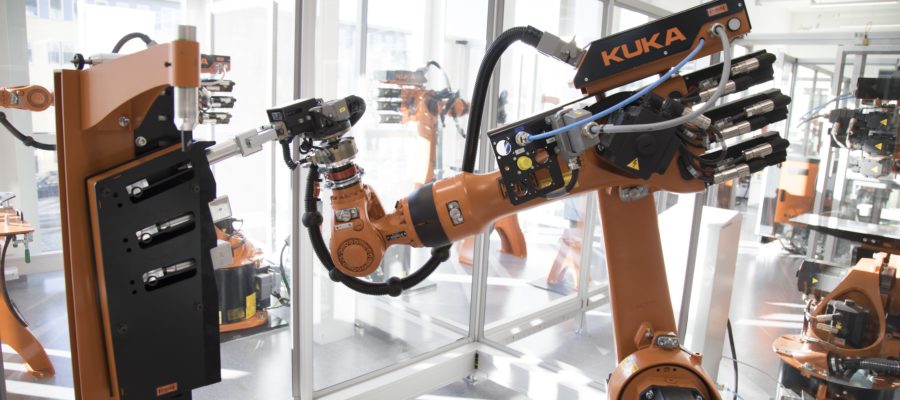KUKA is the international leader in robotics, as well as intelligent automation solutions.
With about 14,000 employees world-wide, KUKA constructs custom, turnkey robotics and intelligent automation solutions which serve customers in several different industries.
In order to distribute a wide range of industries, KUKA needs a substantial range of robots, and an even more extensive range of custom tools and software in order to equip those robots. When combined, the systems that have been built are then part of an emerging category of technologies that create digital, “smart factories,” also known as Industry 4.0.
To innovate and build robotic arms and grippers quickly, KUKA uses yet another “smart factory” technology; MakerBot 3D printers.
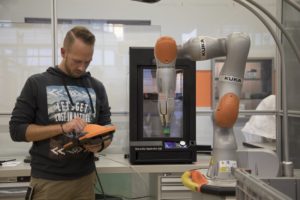
Human-Robotics collaboration is the future for KUKA and robotics, where as 3D printing is the future of manufacturing.
The KUKA Development and Technology Center in Augsburg is home to where two teams work closely with 3D printers; the Prototyping team, which develops new robots, and the Applications Engineering Team, which develops new custom applications. The teams regularly uses 3D printers in early stages of their design process, so often that their MakerBot Z18 is operated for more than 7,000 hours each year.
The newest robot being used in KUKA’s lineup is the KR 3 AGILUS. This is a smaller scale robot made for smaller automation cells. It saw one of the company’s fastest development cycles yet, thanks to KUKA’s extensive use of additive manufacturing.
KUKA LBR iiwa robotic arm
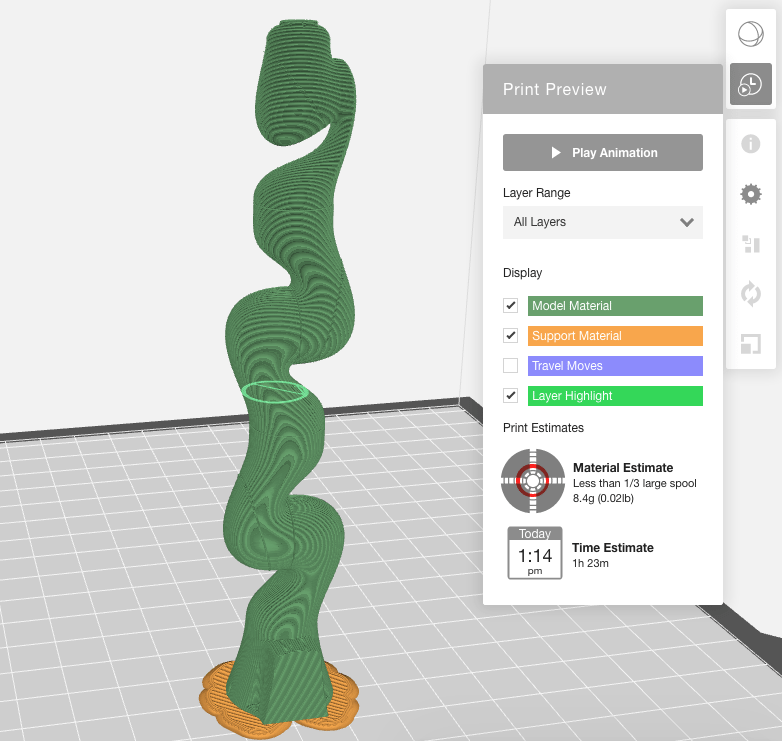
KUKA’s prototyping team has used 3D printers at every possible step when building the new KR 3 AGILUS.
You can only imagine the planning, testing and precision that goes in to building a six-axis robot that is capable of performing in a wide range of applications. At KUKA, this job is done by Soeren Papsdorf, Head of Manufacturing Engineering, along with his team. Having accessibility to an in-house 3D printer with massive build volumes, gives designers and engineers the opportunity to print and test designs much earlier in the process, rather than outsourcing parts, or for a significantly lower cost than if they produced metal parts in-house.
After the final design is close to being completed, the team prints scale prototypes to test more compliocated design features such as cable routing – a step which would otherwise take weeks without unrestricted access to 3D printers. Using the rich physical information, available prom the earlier printed prototypes, designers can make quicker and better decisions. These decisions will ultimately save weeks in their total development time.
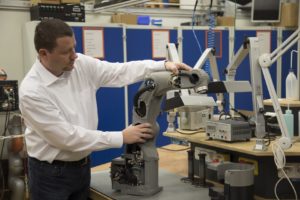
As the KR 3 AGILUS design is in its final form, Soeren’s team printed custom tooling and manufacturing setups for assembly and testing. He said that his team doesn’t have the luxury of simply go to the hardware store and buy robot building tools; they must be customized. These manufacturing jigs and fixtures are 3D printed and iterated on in-house, streamlining another stage in the process which previously needed an additional back and forth with outsourced suppliers.
As an end result, the team reports saving several weeks during the development of the KR 3 AGILUS, based only on their successful use of 3D printers. Part of this can be attributed to the reliability of their MakerBot Z18s, although a large part is owed to the level of confidence the team brings to operating them correctly and efficiently. The printers run at a 92% success rate, and at being used for over 7,000 hours a year, they are printing constantly.
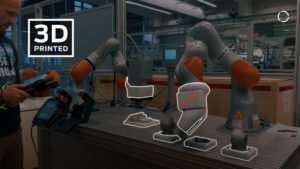
Once completed, the KR 3 AGILUS requires custom end effectors, or “hands” to carry out distinctive tasks for KUKA’s customers.
The Applications Engineering Team, led by Otmar Honsberg, takes robots from KUKA’s expanding portfolio produced by Soeren’s team and builds custom applications for tasks in various industries. If you require a robot in order to assemble delicate consumer electronics, Otmar’s team discovers, then prototypes the best processes and hardware to complete it.
With the KUKA LBR iiwa, (a smart robot that is able to safely work alongside humans) Otmar’s team started to prototype a gripper for a specific customer request; the end-effector must dynamically identify specific objects in containers and move then. Using 3D printers, his team sprinted from early concept exploration to testing 3D printed parts in the final stage of the hand, cutting down on hardware weight and development time. The end result is paired with a camera and software, which is KUKA’s automated ItemPiQ end-effector.
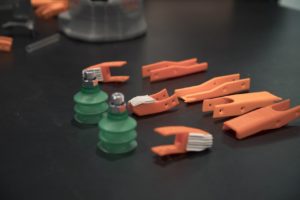
After building a hand, Otmar’s team implements the system at the customers facility. Access to reliable 3D printers provides the ability to further customize, and improve solutions rapidly and iteratively while on-site. Even with the full cycle from start to finish, Otmar says that his designers and engineers have an outstanding amount of freedom using 3D printers, and conventional processes are way too slow in comparison. He also mentions that in some cases, 3D printing can save anywhere from 2-4 weeks throughout the entire process and that this level of fine-tuning, service, and customization wouldn’t be possible without the use of additive manufacturing.
3D printing and robots are the future of manufacturing.
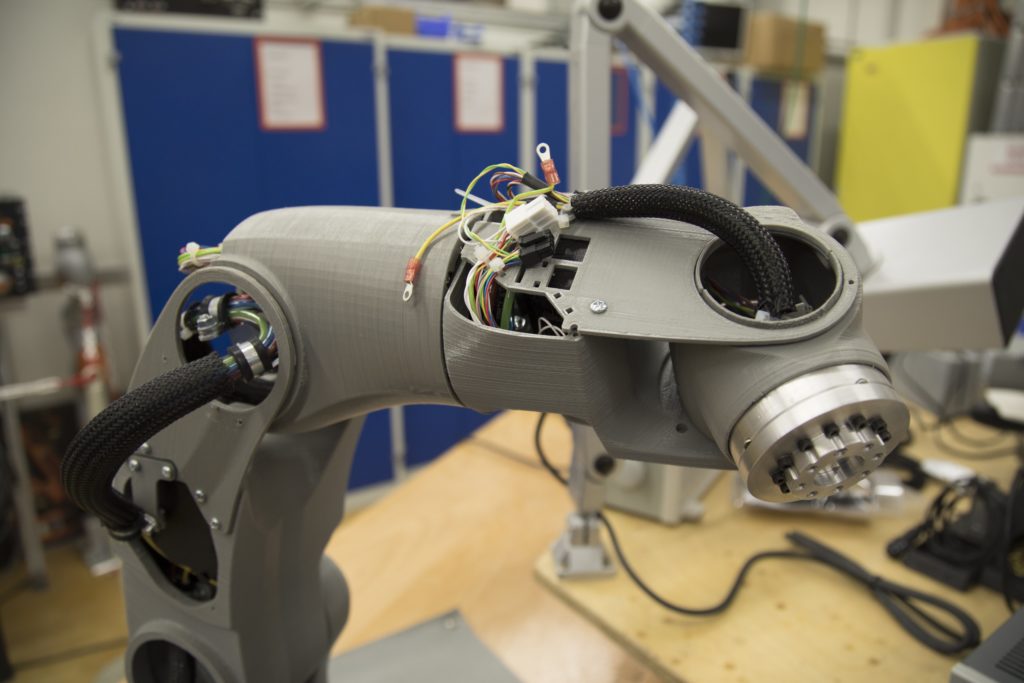
KUKA is quickly changing the manufacturing industry, and owe a good deal of their leadership to the speed at which they innovate new technologies and release products such as the KUKA KR 3 AGILUS, and the KUKA LBR iiwa. KUKA enables a new model of manufacturing that combines the power and precision of robots with the reactivity and flexibility of a human problem solver by building robots that could safely interact with humans.
The future of manufacturing depends greatly on the efficiency and reliability of these remarkable new systems – and when it comes to constructing the future of manufacturing, KUKA uses MakerBot 3D printers.
